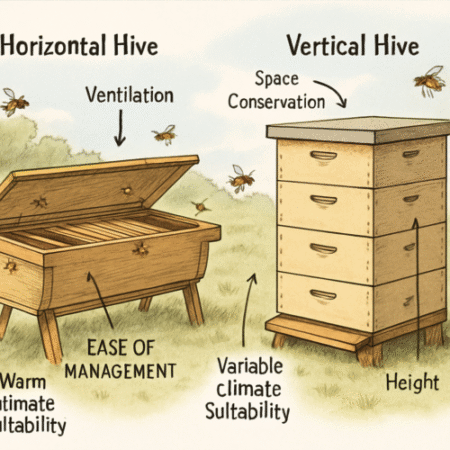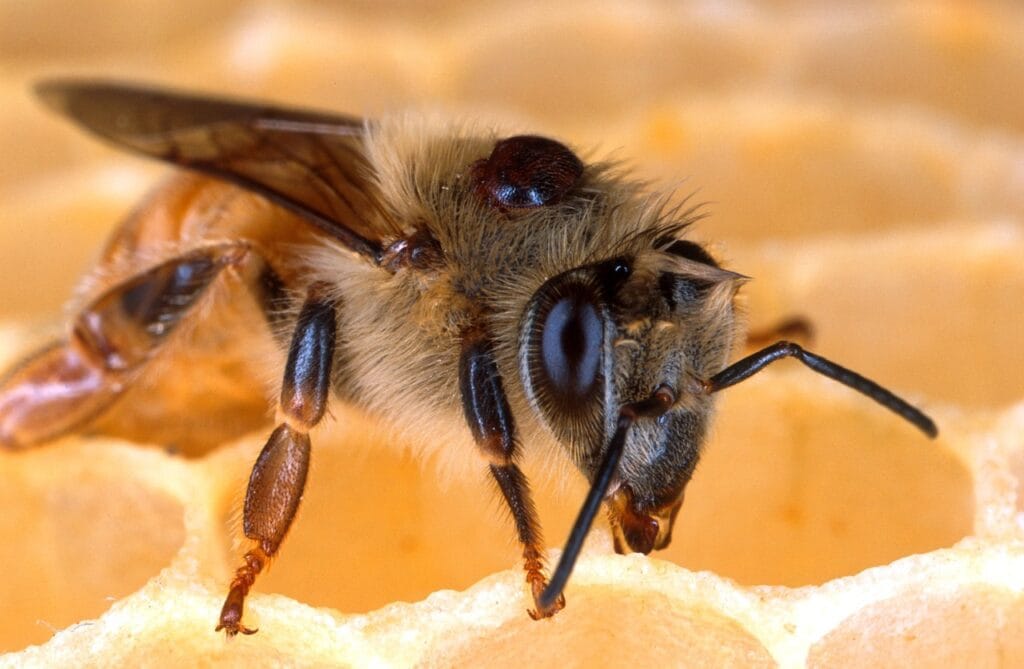Langstroth Hive: Climate Advantages
- Cold Climate Performance
- The vertical, modular design helps bees cluster naturally and ascend through honey stores, mirroring behavior in tall tree cavities. This aids winter survival, as bees retain warmth more efficiently and can continuously access food above them.
- The stacked boxes reduce heat loss through the sides, making insulation more effective with simple wraps or covers.
- Upward air movement within the hive supports bees’ natural thermoregulation in cold temperatures.
- Adaptability to Extreme Conditions
- Langstroth hives can be easily fitted with additional insulation (e.g., insulation wraps, thicker covers) when needed for particularly harsh climates, including both extreme cold and hot weather.
- The modular format also allows beekeepers to adjust hive volume, helping colonies regulate temperature with their changing size throughout the year.
- Humidity and Ventilation Management
- The design allows for controlled ventilation by adjusting entrance reducers, upper ventilation holes, or screened bottom boards, crucial for reducing excessive moisture in winters and managing heat in summers.
Top-Bar Hive: Climate Implications
- Warm Climate Performance
- Broad, horizontal layout supports rapid dissipation of excess heat, making it well suited to hot climates or regions with mild winters.
- Enhanced airflow and easy ventilation options help bees stay cool and reduce risk of hive overheating.
- Cold Climate Considerations
- Requires much thicker insulation to prevent heat loss due to increased exposed surface area and less efficient clustering.
- More susceptible to internal drafts and temperature fluctuations; winter survival may be a challenge if insulation and design aren’t carefully adapted to local climate.
Table: Climate-Related Comparison
| Feature | Langstroth Hive | Top-Bar Hive |
| Cold Climate Suitability | Excellent with moderate insulation; supports vertical clustering | Needs heavy insulation; less efficient heat retention |
| Warm Climate Suitability | Performs well, but needs good ventilation | Well adapted; wide space aids cooling, easy airflow |
| Insulation Needs | Moderate; wraps/top insulation usually sufficient | High; thick walls and top insulation essential in cold climates |
| Ventilation Control | Easy to customize for humidity/temperature changes | Good in warm climates; trickier to balance in cold climates |
| Clustering Behaviour Support | Vertical design mirrors natural winter clustering | Less efficient for clustering in cold, works well in warm areas |
Summary
Langstroth hives are best for cold and variable climates due to their vertical structure, ease of insulation, and efficient support of bees’ natural winter behaviors.
They are also adaptable for both hot and temperate regions with minor modifications. Top-bar hives excel in hot environments where ventilation and broad layout prevent overheating but demand careful insulation in cold weather to safeguard colony survival.



